War Between Romans And Persians Lasted 721 Years: One Of The World’s Longest Human Conflicts In History
Ellen Lloyd - AncientPages.com - One of the world’s longest human conflicts in history was between the Romans and Persians.
The Hundred Years’ War and even Rome’s long and epic struggle with Carthage was brief compared to Rome and Persia’s Near Eastern struggle. The wars between these great empires lasted about 721 years.
At the beginning of the ancient Roman Empire, the conflicts were only of territorial nature. Ancient Romans used aggressive methods to expand the boundaries of their territories. Later, there came to be a religious aspect to the wars as the Eastern Realm of Christendom confronted the Western bounds of Persian Zoroastrianism.
Tagh-e Kasra as it looked in 1934 in the ancient city of Ctesiphon. Credit: Public Domain
The ancient Roman Empire stretched from Syria to Britain. Only one power could challenge Roman arms on anything approaching an equal footing: the Persian rulers of the land that now comprises Iraq. This area, the location of numerous ancient civilizations, was the heart of a Persian empire stretching from modern Pakistan to the Syrian border. Two dynasties ruled the Persian Empire, the Parthians (238 B.C.–A.D. 227) and later the Sassanids (A.D. 227-651).
Persians had established the capital city of Ctesiphon thirty-five miles from the site of modern Baghdad. As they became great empires during the following centuries, Rome and Persia fought many wars. The Romans attacked Ctesiphon more than a half-dozen times, and on five occasions in the second and third centuries A.D., they took the city by storm.
Roman victories in Iraq were transitory and self-defeating.
Modern reconstruction of Punic Carthage. The circular harbor at the front is the Cothon, the military port of Carthage, where all of Carthage's warships (Biremes) were anchored. Damian Entwistle - CC BY-SA 2.0
Julius Caesar’s planned invasion of Iran through Armenia was cut short by his assassination on the Ides of March in 44 B.C. Mark Antony carried out Caesar’s invasion plan in 36 B.C., without the great military leader’s tactical skill. He lost half his men in the mountains of northwest Iran and marched home through Armenia in the harsh winter.
Emperor Trajan invaded Armenia and Mesopotamia between 114 and 115 and annexed them as Roman provinces. Before sailing downriver to the Persian Gulf, he captured the Parthian capital, Ctesiphon.
Being too old to fight, he later withdrew his armies and returned to Syria. Emperor Trajan died in 117.
".... Drawing on a wealth of new research, archaeologist, historian, and master storyteller Richard Miles resurrects the civilization that ancient Rome struggled so mightily to expunge. This monumental work charts the entirety of Carthage's history, from its origins among the Phoenician settlements of Lebanon to its apotheosis as a Mediterranean empire whose epic land-and-sea clash with Rome made a legend of Hannibal and shaped the course of Western history. Carthage Must Be Destroyed reintroduces readers to the ancient glory of a lost people and their generations-long struggle against an implacable enemy. ..." Read more
The struggles continued between the empires. Finally, a Persian hero arose in the person of Shapur I, the second king of the Sassanid dynasty, whose reign of 241-272. He retook much of the territory Rome had won in previous wars and even made incursions into Roman territory.
He captured Roman Emperor Valerian after crushing his army in A.D. 260, and Khusro II in 611 penetrated the Bosporus, in sight of Constantinople before a Byzantine counterattack drove him and his men back to Iraq. The Sassanid state collapsed not long after the Arab victory at the Battle of Qadesiya in Iraq in 637. Byzantium survived but only after losing Syria, Egypt, Palestine, and northern Africa to the Arabs.
Roman emperor Valerian surrenders to Shapur I. Credit: Ali Ganjei - Public Domain
The conflict between the great empires was a matter of power and glory. For centuries, every ambitious young Roman dreamed of winning a battle and returning home to celebrate a triumph.
A triumph was not merely a victory parade, although the successful general–in a chariot pulled by white horses and with a laurel wreath on his head–would ride through the city of Rome to the cheers of the crowd, accompanied by his troops and with booty and captives on display.
The ostentatious parade was an official recognition by the Roman Senate that the general had won a major victory and that, in effect, he was a man to be reckoned with. For many a Roman noble, the triumphal procession led to the Forum, where political success began.
The devastating effects of these wars were that both empires crippled. Persia was plunged into several years of dynastic turmoil and civil war.
Credit: Adobe Stock - vukkostic
The Roman Empire was also severely affected, with its financial reserves exhausted by the war and the Balkans now largely in the hands of the Slavs.
So, which side won the battle? None, actually. The winners of the conflict between the Romans and Persians were the Arabs. Within a few years, both once great empires were struck by the onslaught of the Arabs who inherited the energy that the two powers wasted on the conflict.
Rarely in the history of human conflict has a feud such as the one between the empires of Rome and Persia lasted so long and accomplished so little.
Written by Ellen Lloyd - AncientPages.com
Copyright © AncientPages.com All rights reserved. This material may not be published, broadcast, rewritten or redistributed in whole or part without the express written permission of AncientPages.com
More From Ancient Pages
-
 Amazing Ancient One-Stroke Dragon Art Tradition – Painting Dragons With A Single Brush Stroke
Ancient Traditions And Customs | Apr 29, 2021
Amazing Ancient One-Stroke Dragon Art Tradition – Painting Dragons With A Single Brush Stroke
Ancient Traditions And Customs | Apr 29, 2021 -
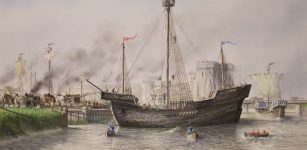 Newport Ship: Experts Reassemble Medieval Vessel Found In The Mud
Featured Stories | Feb 7, 2023
Newport Ship: Experts Reassemble Medieval Vessel Found In The Mud
Featured Stories | Feb 7, 2023 -
 Ephemeral Evidence Of Mediterranean Mobility – Boats, Migration, And The Central Mediterranean Passage In Focus
Archaeology | Dec 23, 2021
Ephemeral Evidence Of Mediterranean Mobility – Boats, Migration, And The Central Mediterranean Passage In Focus
Archaeology | Dec 23, 2021 -
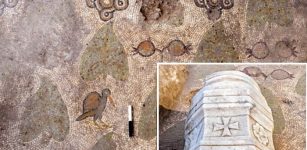 Extraordinary Ancient Mosaics, Crucifixes, And Long-Lost Church Discovered In The Holy Land
Archaeology | Dec 22, 2017
Extraordinary Ancient Mosaics, Crucifixes, And Long-Lost Church Discovered In The Holy Land
Archaeology | Dec 22, 2017 -
 Evolution Of Paleodiet At Neolithic Qujialing Site Unveiled By Scientists
Archaeology | Nov 30, 2022
Evolution Of Paleodiet At Neolithic Qujialing Site Unveiled By Scientists
Archaeology | Nov 30, 2022 -
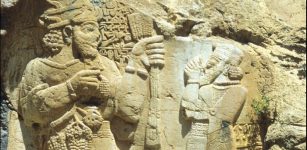 Ivriz Relief: 3,000-Year-Old Hittite Relief – Oldest Known Symbol Of Agricultural Fertility In History
Artifacts | Jun 13, 2019
Ivriz Relief: 3,000-Year-Old Hittite Relief – Oldest Known Symbol Of Agricultural Fertility In History
Artifacts | Jun 13, 2019 -
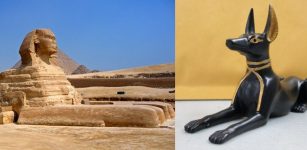 What Was The Sphinx And What Is Wrong With Its Body And Head?
Civilizations | Apr 6, 2017
What Was The Sphinx And What Is Wrong With Its Body And Head?
Civilizations | Apr 6, 2017 -
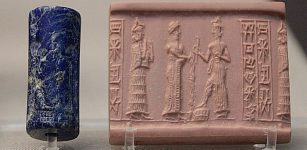 Shamash: Mesopotamian God Of Sun, Truth, Justice And Healing
Featured Stories | Jan 11, 2016
Shamash: Mesopotamian God Of Sun, Truth, Justice And Healing
Featured Stories | Jan 11, 2016 -
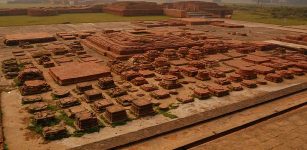 Vikramashila: India’s Main Intellectual And Learning Center Of Tantric Buddhism
News | Sep 19, 2015
Vikramashila: India’s Main Intellectual And Learning Center Of Tantric Buddhism
News | Sep 19, 2015 -
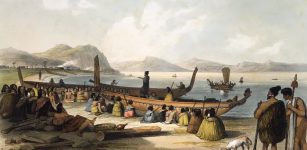 Discovery Sheds Light On Why Pacific Islands Were Colonized
Archaeology | Apr 22, 2022
Discovery Sheds Light On Why Pacific Islands Were Colonized
Archaeology | Apr 22, 2022 -
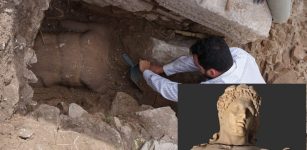 Stunning Well-Preserved Larger Than Life Statue Of Hercules Discovered In Philippi, Greece
Archaeology | Sep 24, 2022
Stunning Well-Preserved Larger Than Life Statue Of Hercules Discovered In Philippi, Greece
Archaeology | Sep 24, 2022 -
 Mysterious Melchizedek: ‘King Of Righteousness’ And Heavenly High Priest In Bible And Dead Sea Scrolls
Biblical Mysteries | Sep 2, 2017
Mysterious Melchizedek: ‘King Of Righteousness’ And Heavenly High Priest In Bible And Dead Sea Scrolls
Biblical Mysteries | Sep 2, 2017 -
 142,000-Year-Old Shell Beads Found In A Cave Are The Oldest Known Evidence Of Human Communication
Archaeology | Oct 16, 2021
142,000-Year-Old Shell Beads Found In A Cave Are The Oldest Known Evidence Of Human Communication
Archaeology | Oct 16, 2021 -
 Fascinating Ancient Legend Of Jason And His Argonauts Was Based On A Real Expedition To An Ancient Kingdom
Greek Mythology | Dec 3, 2014
Fascinating Ancient Legend Of Jason And His Argonauts Was Based On A Real Expedition To An Ancient Kingdom
Greek Mythology | Dec 3, 2014 -
 Steel Was Already Being Used In Europe 2,900 Years Ago – New Study
Archaeology | Mar 1, 2023
Steel Was Already Being Used In Europe 2,900 Years Ago – New Study
Archaeology | Mar 1, 2023 -
 Mysterious Old Ship With No Crew Reaches The Canadian Coast
Featured Stories | Jul 25, 2024
Mysterious Old Ship With No Crew Reaches The Canadian Coast
Featured Stories | Jul 25, 2024 -
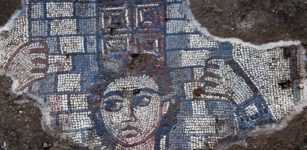 Mosaics Discovered In Ancient Galilean Jewish Village
Archaeology | Jul 10, 2018
Mosaics Discovered In Ancient Galilean Jewish Village
Archaeology | Jul 10, 2018 -
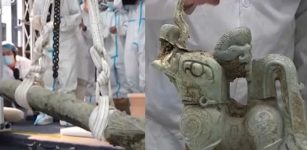 Statue Of Unknown Mythical Beast With Four Wings Discovered
Archaeology | Sep 1, 2022
Statue Of Unknown Mythical Beast With Four Wings Discovered
Archaeology | Sep 1, 2022 -
 Giulia Tofana Poisoned 600 Men – Beautiful Sicilian Woman And Her Deadly Mission
Featured Stories | Feb 22, 2018
Giulia Tofana Poisoned 600 Men – Beautiful Sicilian Woman And Her Deadly Mission
Featured Stories | Feb 22, 2018 -
 Remarkably Well-Preserved Afragola Village After The Vesuvio Eruption 4,000-Years Ago
Archaeology | Sep 29, 2022
Remarkably Well-Preserved Afragola Village After The Vesuvio Eruption 4,000-Years Ago
Archaeology | Sep 29, 2022





